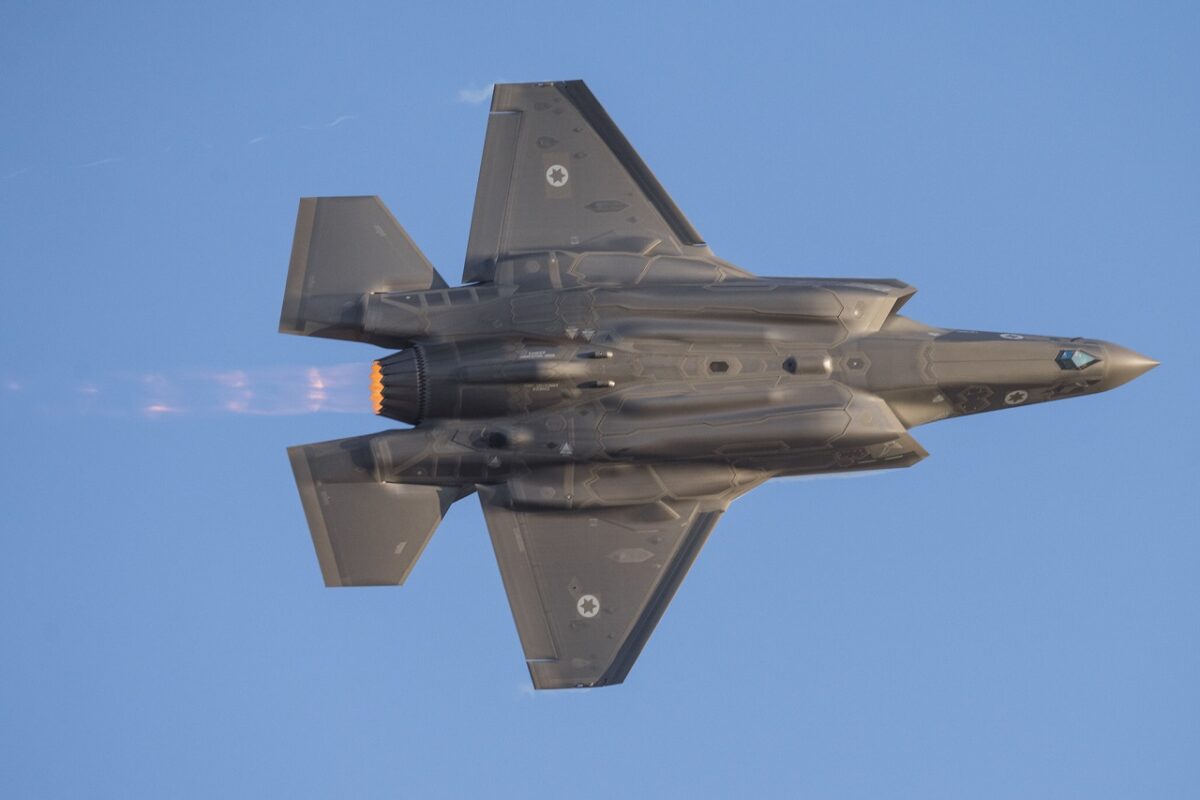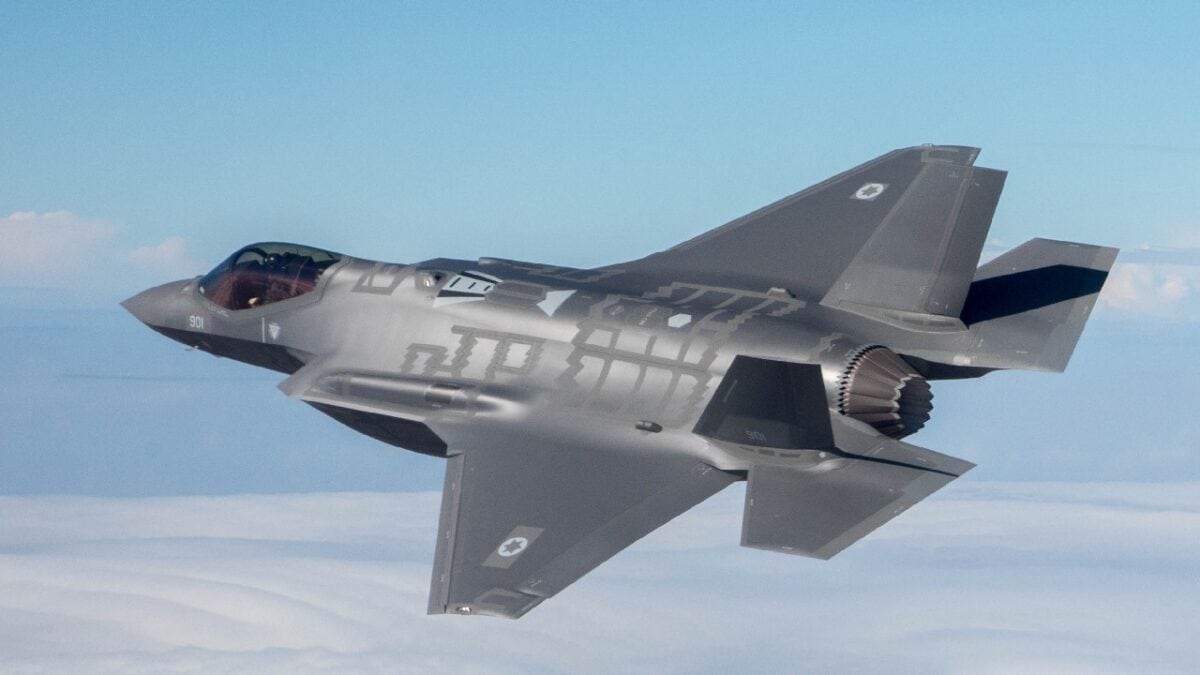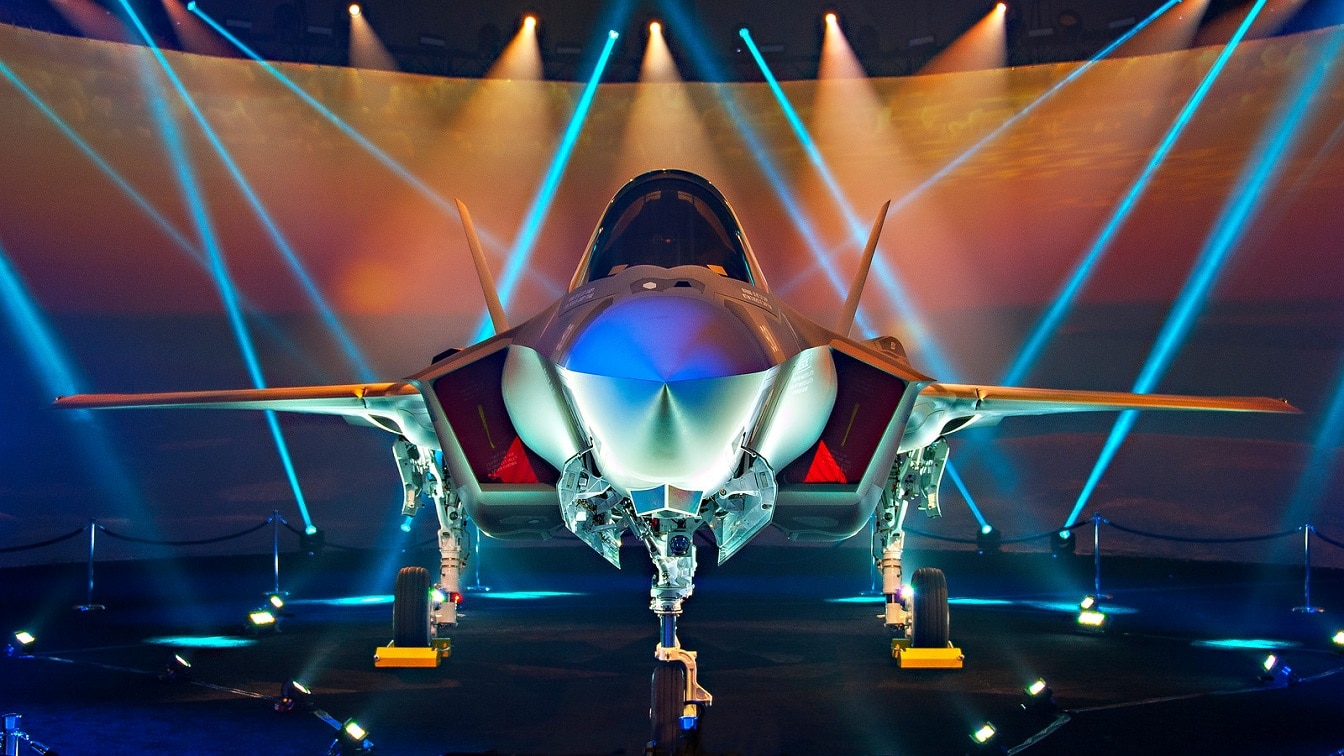Israel is trying to pressure the United States to refrain from re-entering the Iranian nuclear deal. The Israelis are worried that despite any renewal of the Joint Comprehensive Plan of Action, the Iranians will still speed toward building a nuclear weapon. That has Israeli politicians warning the Americans to pull out of negotiations.
Former Israeli Prime Minister Naftali Bennett Tweeted on August 23 that the government will “utilize all available tools to prevent the Iranian nuclear program from advancing.” Would one of these tools be Israeli airplanes that could bomb Iranian nuclear infrastructure if Tehran became nuclear capable?
F-35I Is a Key Attack Airplane
If military escalation becomes the case, Israel is likely to use the F-35I Adir in a bombing run against Iran. The Israeli air force recently revealed the F-35I could reach Iran without aerial re-fueling. The service branch said it made unspecified modifications to the stealth fighter to extend its range in order to attack Iranian nuclear facilities. The Israeli air force also claims it now has a one-ton bomb that can fit inside the internal weapons bay to avoid radar detection and maintain the F-35I’s overall stealthiness.
The munition that is made by Rafael Advanced Weapons Systems is believed to be “autonomous and protected against jamming and electronic warfare systems,” according to the Jerusalem Post.
Testing and Practicing for an Iranian Bombardment
Israel’s air force is undergoing major tests and evaluations on the F-35I. First, aviators are attempting to determine if the airplane could evade Iranian radar and air defenses. Pilots are simulating long-range flight with aerial combat. Analysts are determining if the F-35I could fall victim to electronic countermeasures or cyber intrusions. Pilots also flew the F-35I with older F-15s and F-16s to test interoperability.
Quick History of Israel’s F-35I
Israel was the first country outside of the United States to choose the F-35 as its featured fighter in 2010. In 2016, the F-35I was presented to the Israelis. They flew it over Lockheed Martin’s plant in Fort Worth, Texas that year. In 2017, the Air Force determined it had met its initial operating capability, and the next year it began combat patrols. Fourteen airplanes have been delivered and Israel eventually wants 50 F-35Is.
F-35I Has Seen Combat
In 2022, the Israeli military announced it had shot down two Iranian drones the year before. The unmanned craft, believed to be Shahed 197s, were destroyed outside Israeli air space. This was the first time the F-35 platform had destroyed an unmanned system with its missiles.
F-35I: We Asked an Expert for a Deeper Perspective
National security expert Sebastien Roblin discussed with us the positive aspects of the F-35I. Roblin said the airplane can penetrate enemy air defense zones in comparative safety. “Furthermore, it comes with excellent sensors that allow it to soak up information it can use for self-defense, targeting of guided weapons, and relaying to friendly forces. Due to economies of scale, its unit cost is surprisingly low, falling at or below cutting-edge non-stealth jets.”

F-35I Adir. Image Credit: IDF Flickr Page.
Roblin does admit the airplane comes with disadvantages.
“Broadly, the type’s shortcomings are high operating costs/maintenance requirements, limited weapons load when in stealth mode (4-6 internally-stowed munitions), and range limitations when attempting to remain stealthy (without relying on stealth-betraying external fuel tanks and tanker aircraft). It’s also not designed to outperform other jets in a sustained maneuvering dogfight, but its sensors and stealth should ordinarily help an F-35 pilot manage risks so that they engage enemies only under favorable terms—which should be particularly true facing Iran’s outdated air force,” Roblin said.
Roblin pointed out that the F-35I has the ability to make it to Iran for a bombing run due to its external and internal fuel tanks that extend range. Other equipment would favor the Adir against Iran.
“Compared to an ordinary F-35, for the F-35I Israel has developed two types of fuel tanks—a regular external drop tank and a ‘stealthy’ conformal tank—extending its range so it can conceivably conduct a strike on targets in Iran. The Adir’s computer also incorporates an Israeli software shell working alongside Lockheed’s proprietary system (a feature a lot of other air forces would like!) and unique hardware apertures allowing plug-and-play installation of Israeli pods, including datalinks, sensors or customized self-defense jammers. Enhanced datalink could facilitate an F-35I’s networking with non-stealth aircraft or even surface forces in a combat operation; and the jammers could be tailored to defeat the diverse array of air defenses systems, both imports, and reverse-engineered clones, fielded by Iran,” he replied.
Roblin noted that the F-35I has indigenously-designed munitions that aid Israel to instigate an Iranian attack.
“The F-35I also is compatible with Israeli weapons, which is notable given U.S. reluctance to transfer the kinds of penetrating and/or long-range weapons Israeli wants for an Iran strike. F-35I armaments of note are the Delilah cruise missile, and the GPS-guided Spice glide bomb which comes in 1,000 and 2,000 pound variants and can precisely hit targets from 60-100 kilometers away, a fairly safe distance for an F-35.”
Roblin believes Israel’s air force has the ability to carry out a successful bombing mission against Iran.
“Were the IDF is given access to Saudi airspace, as seems likely, it’s hard to see how Iran could prevent a well-planned Israeli raid from hitting whatever nuclear sites it chose with relative precision (range restrictions permitting)” he said.
But Israeli politicians may be talking tough and are optimistic about a strike against Iranian nuclear infrastructure that could change the facts on the ground and deny Tehran a nuclear device.
“The real question is rather whether even successfully delivered strikes can achieve the effects hoped for by Israeli politicians, given Iran’s dispersal and fortification of its nuclear program and the global consequences of a more open level of warfare with Iran.”

Israeli Air Force F-35I Adir stealth multi-role fighter.
It is interesting to see how much the Israelis have improved the F-35I Adir to put their own unique stamp on the platform. One problem I would foresee with an attack is bomb damage assessment. How would the Israelis know if a bombing raid is successful? How many follow-on attacks would they need to execute? Also, the Iranians would likely not stand pat and would attack Israeli cities and military targets with ballistic missiles. This could easily spark a longer war with Iran – something that both sides say they can sustain but one that would be disastrous in casualties and destruction.
Expert Biography: Serving as 1945’s Defense and National Security Editor, Dr. Brent M. Eastwood is the author of Humans, Machines, and Data: Future Trends in Warfare. He is an Emerging Threats expert and former U.S. Army Infantry officer. You can follow him on Twitter @BMEastwood. He holds a Ph.D. in Political Science and Foreign Policy/ International Relations.

